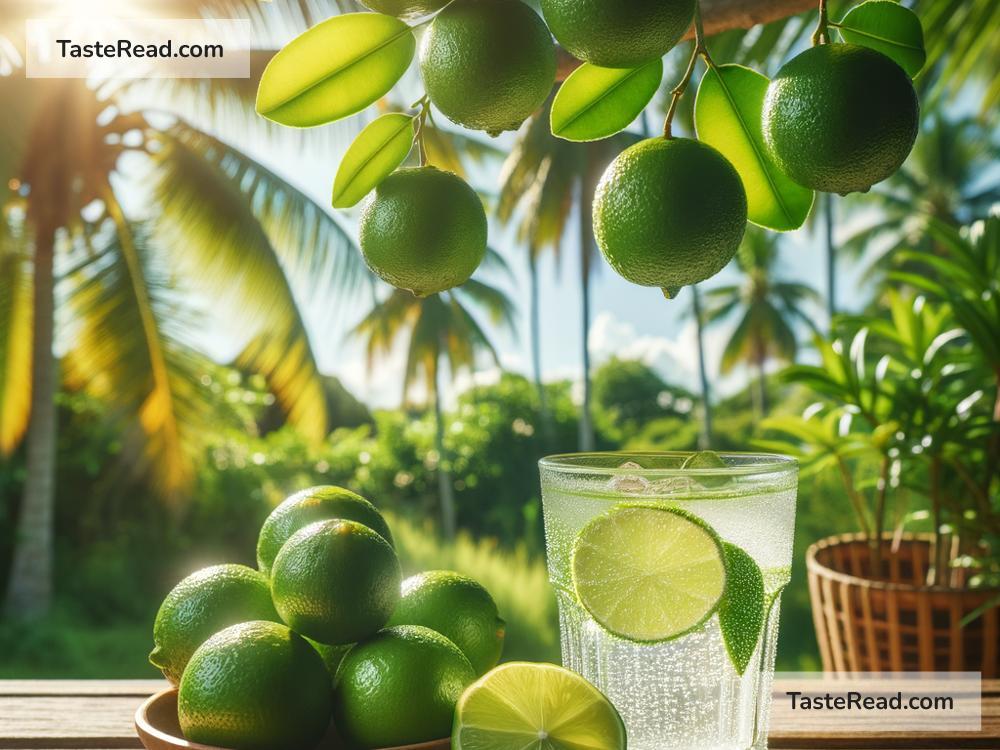How Limes Became a Symbol of Tropical Freshness
When you think about tropical places, what comes to mind? Maybe the sun shining, sandy beaches, and tall palm trees. But there is one fruit that has become a clear symbol of tropical freshness, capturing the tastes and smells of faraway islands: the lime. In drinks, food, or even in its fresh scent, limes remind us of the bright, tangy essence of the tropics. Have you ever wondered how this small green fruit earned the reputation as a symbol of tropical living? Let’s take a deeper dive into its story.
The Journey of the Lime
Limes didn’t originally hail from the Caribbean or other tropical areas people associate them with today. Historians believe limes first grew thousands of years ago in Southeast Asia, particularly in regions like Malaysia and India. From there, traders brought the fruit to the Middle East, Africa, and eventually Europe. By the 15th century, European explorers spread limes across the globe, especially in tropical regions with warm climates where they grew particularly well.
When Spanish and Portuguese explorers ventured to the Americas, they planted lime trees in the Caribbean islands and South America. The warm climate and fertile soil were perfect for growing juicy, flavorful limes. Over time, lime trees flourished, and the fruit became a staple in these regions. In tropical areas, people relied on limes not only for their flavor but also for their health benefits.
A Tropical Lifesaver
One of the key reasons why limes became popular was their ability to prevent scurvy—a disease caused by a lack of vitamin C. During long sea voyages in the 18th and 19th centuries, sailors often suffered from scurvy because their diet lacked fresh fruits and vegetables. However, limes (and their citrus cousin, lemons) were packed with vitamin C, which kept sailors healthy. In fact, the British Navy earned the nickname “limeys” because of their practice of giving lime juice to sailors to prevent scurvy.
This association with tropical survival further connected the fruit to sunny, faraway places. While limes were lifesavers for sailors, they also became a key ingredient in the Caribbean’s colorful food and drink culture. Locals used limes to bring brightness to dishes and cocktails, adding the refreshing zing that we now associate so strongly with tropical freshness.
The Flavor That Says “Fresh”
Limes have a unique taste that sets them apart. Their tangy and slightly sour flavor feels like sunshine in your mouth, and their juice adds a crisp, refreshing kick to almost anything. Think about a glass of ice-cold limeade on a hot day or a mojito garnished with a twist of lime—delicious, right? Whether squeezed into marinades, drizzled over tacos, or mixed into tropical cocktails, limes enhance flavors and awaken the senses. Their ability to bring bold, fresh notes made them an essential part of tropical cuisine.
But it’s not just the flavor that earned limes their reputation. Their iconic green color is vibrant and eye-catching, reminding us of lush greenery in the tropics. Even the scent of limes is refreshing—a mix of citrus and a hint of sweetness that instantly evokes images of oceanside relaxation.
Limes in Pop Culture and Industry
Over time, limes became a symbol of tropical freshness not just in food and drinks but also in pop culture and products. In advertisements, limes are often paired with images of sunny beaches, hammocks, and icy cocktails. Companies use lime-based scents in household products, from soaps to air fresheners, because people link the smell to cleanliness, energy, and vacation vibes.
In recipes, tropical cocktails like margaritas and caipirinhas often feature lime as a star ingredient, cementing its association with fun, sunny gatherings. The popularity of dishes like guacamole, ceviche, and Thai curries also highlights lime’s ability to add brightness and balance, making it an essential ingredient in global cuisine.
So, Why Do Limes Feel So Tropical?
Limes feel tropical because they embody everything we love about sunny, getaway destinations—their flavor is bright and lively, their scent is clean and invigorating, and their vibrant color reminds us of nature’s beauty. Even though limes first originated in Asia, their journey through history placed them firmly in the heart of tropical cultures and cuisines.
Today, the lime stands as more than just a fruit; it’s a symbol of freshness, adventure, and the laid-back lifestyle of tropical regions. When you sip a citrusy drink with lime, or enjoy a meal featuring its zingy juice, you’re connecting to a story that spans continents and centuries. It’s a small fruit with a big impact, reminding us of the joy and vividness that tropical living brings.
So next time you see a lime, think about its fascinating journey and the role it plays in capturing the taste and spirit of the tropics. From ancient trade routes to modern cocktails, limes have truly earned their place as an emblem of tropical freshness.


